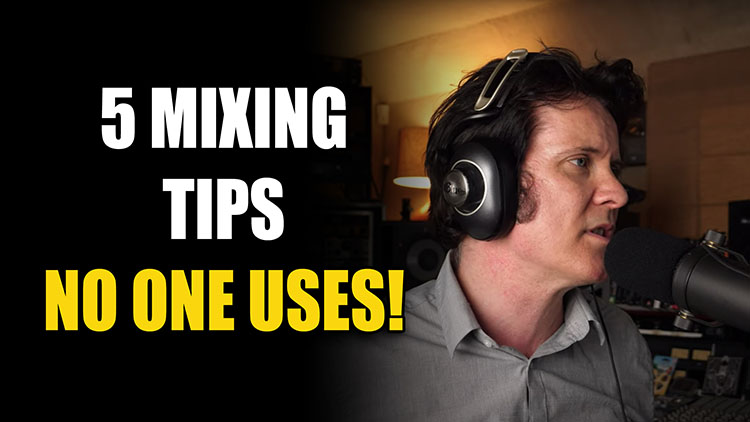Today, we are going to talk about 5 very interesting tips for mixing! These are tips that can be very useful when you are mixing, but not many people use them!
We also have these tips available as a cheat sheet so you can always have them on hand! Click here to download the cheat sheet!
1. You can record in half speed.
One area this can be useful is when you are recording a part and want it to go up an octave. If you record at half speed, and then play it back at normal speed, it will be an octave higher when you play it back! It can also be useful if you have a really complicated part, as it will be much easier to play the part at the half speed.
2. Playing back at half speed.
A few years ago, I was in a mastering session and we were listening to the track as it was being mastered, and we heard this high frequency. It turns out, the console the track was mixed on had a problem with the screen and it was putting this high-pitched ring into it, and it was buried in the mix.
If you have a high frequency like that buried in your mix, many adults actually can’t hear frequencies that are super high, so you may not even notice. By playing it back at half speed, you bring the frequency down to a point where you can hear it, and it becomes very predominant in the mix.
3. Using a snare sample to trigger the reverb.
This is actually a famous tip from Andy Wallace that I read in a magazine in the early 90s.
If you’ve got hi-hat bleed, or any other kind of bleed, when any of that stuff comes into your live snare, it might make it sound more mushy when you want a really focused reverb. What Andy Wallace would do, it use a snare sample to trigger the reverb. Meaning, that you likely won’t even hear the sample, because it is only being used to trigger the reverb.
What I did is take the snare sample with the reverb on it, but then muted the sample, so all you can hear is the reverb of the sample! This produces a much more natural sounding snare drum.
4. De-essing on things other than vocals.
De-essing is good for more than just vocals! It is really nice for taking the edge off of your overheads, or on a hi-hat. Sometimes on acoustic guitars you get certain chords or strings that are ringing super high, or they are vibrating on the nuts or bridge, and using a de-esser can help minimize these sounds.
5. Using saturation in different ways.
This is something that I use primarily on room mics. It mostly effects those high frequencies, and means that I am using the saturation in the mix to soak them up. What I can do next is apply a bit of EQ and some reverb to it, and all of a sudden my room mics become massive!
READ ALSO: 5 Mixing Tips No One Uses!
READ ALSO: 5 Best Studio Desks for Home Mixing
READ ALSO: How to Design and Use Supersaw Synth
Watch the video below to hear more about these mixing tips!
